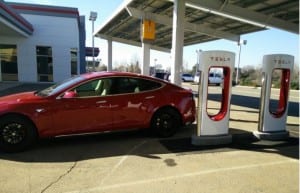It’s easy to get a little complacement sometimes, particularly when you live in Europe. The region is doing better than most in terms of countering rising emissions, largely down to great performance in the electricity sector. Coal is stalling, oil is losing its bankability and gas is hopefully up next.
There is a problem waiting in the wings that is very much unlike the electricity sector. It involves large companies, sure, but it also involves people, because it relates to the cars we decide to buy. You and I aren’t in charge of whether to build a wind farm or a coal-fired power station, but most of us are directly or indirectly linked to the purchase of a small fossil fuel combustion device at some point in our lives. This means a unique interplay between what people want from their transport and what’s supplied by the companies that manufacture vehicles.
It should be an easy win, right? Support for climate action is incredibly high, even during a pandemic. People want change, and they’re willing to take personal actions to see that realised. Here in Europe the curve isn’t just stalling – it’s bending in precisely the wrong direction. That is incredibly unsettling.
A new data set released by the European Environment Agency (EEA) has confirmed a trend from the past few years: emissions from new cars are rising. Thing were looking okay up until around 2016; after that, the average CO2 emissions from passenger vehicles sold in the EU began a steady climb upwards, which has continued in the new 2019 data:
In fact, petrol and diesel cars still badly dominate new car sales in Europe. Norway – where I live – has seen stunning progress in the rollout of electric replacements, but the change now needs to come from countries like Germany and France:
We need to get to the bottom of this to arrest the rising curve of car emissions in Europe, and it turns out the answer is relatively simple.
The four-wheel driving is killing climate action
We already knew that the rise of the four wheel drive (SUV) was a major contributor to rising global emissions. The International Energy Agency said recently that four in ten cars sold globally are 4WDs. In Europe, that’s one in three.
“SUV sales have grown from 7% in 2009 to 36% in 2018, coupled with an increase in vehicle power and weight. For every 1% shift in the market to more SUVs, the CO2 emissions increase by 0.15 gCO2/km on average”, wrote the Transport and Environment 2019 report. The latest report confirms they are now 38% of sales in Europe – up from 7% in 2008.
The chart above splits out the average emissions intensity of Europe’s fleet by manufacturer, with Jaguar / Land Rover clearly standing out. The reason is relatively clear once you dig further into the data – these manufacturers are increasing their shares of large vehicles in lockstop with this increase in emissions intensity. It is truly astonishing to see this graph, in the context of 2013 – 2018 being years in which climate action was ratcheting upwards in seriousness and prominence, and the Paris Climate Agreement being right smack bang in the middle of this:
This puts the European Union badly off course for its emissions targets. In fact, the growth of four wheel drives has essentially offset the small impact of new electric vehicles (particularly in Norway and Germany) and makes it very likely Europe will miss the 95 grams per kilometres (NEDC) emissions target for 2020/21:
In 2020, 95% of cars are already subject to very significant fines for exceeding the per-kilometre emissions limit of 95 gCO2/km. At 95 Euros per gCO2/km, the fines will add up – easily – to billions. That’s good for Tesla, which is pocketing billions by selling clean vehicle credits, and its CyberTruck, or the rival Rivian – and their potential to change the conversation about EVs, 4WDs, utes and off-roads – can’t come fast enough.
But automakers are already urging the EU Comission to put a stick in the spokes of this scheme, delaying targets and blaming the coronavirus pandemic. But that ignores the fact that this is a problem solely of their own making – surely one they saw coming, as they massively boosted the dominance of polluting vehicles in favour of simply ditching the combustion engine.
Using the 2019 provisional data set, of the 15,443,109 new cars sold in 2019, 1,419,293 were below the looming 95 g/km limit. That’s around 9% of new cars. The rest are over the limit – if we very crudely (there are exceptions and credit systems) apply the 2020-21 fining rules to 2019’s data, it’s around 44 billion Euros.
To read the full story on RenewEconomy’s electric vehicle dedicated site The Driven, click here…















